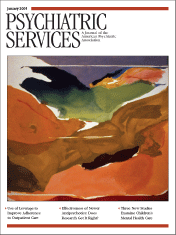Attachment Processes in Couple and Family Therapy Treating Difficult Couples: Helping Clients With Co-Existing Mental and Relationship Disorders
Two books on couples and family therapy are reviewed here. The first, Attachment Processes in Couple and Family Therapy, is an edited text of "attachment theory." The aim of the book is best described in the editors' own words: "Couple and family therapy has been thought of as a technique in search of a theory. We believe what has been missing is a coherent, rich, and researchable theory of bonding. We suggest that attachment theory, at last, can begin to fill this job."
The book provides an introduction to attachment theory, a description of models of clinical interventions that use attachment theory, work with particular populations, a description of how to employ attachment theory, and, finally, applications of attachment theory to particular problems (depression, sexual abuse, and patients with chronic pain).
In my view, the book harks back to an earlier movement in psychology, exemplified by Maslow, as well as by neo-Freudians, that attempted to deal with human behavioral problems by focusing on positives, such as people's strengths and assets, rather than, as the classical Freudians did, on their negatives and their pathologies. This counter-Freudian approach, unfortunately, has come to be neglected. Attachment theory reengages it and thereby fulfills a profound need. The editors of this book have done well in ensuring that, whenever possible, recommended therapeutic interventions are data based. Clinicians will find parts 2 and 3 immediately helpful, for their focus on the problem families that most of us find most difficult—for example, adoptive families, families with depressed adolescents, families with adverse marital outcomes, and families with older adults.
The various chapters are well written; they are free of jargon and cohere beautifully into an integrated whole, balancing theory, clinical practice, and research.
The second book, Treating Difficult Couples: Helping Clients With Co-Existing Mental and Relationship Disorders, is an edited text that deals with an important yet neglected problem of what factors make particular couples and families difficult to treat. The authors hypothesize that "the most difficult couples to treat are those, not only experiencing problems with their relationships, but those in which one or both partners are also experiencing emotional, behavioral, or health problems." Treatment of such couples requires a theoretical model in which couples, family members, and individual treatments are integrated into a comprehensive, unified whole.
Until recently, such models have been fragmentary or sparse. To see why, we have to recall the history of family therapy, which, in its early years, and until relatively recently, too often adopted an antagonistic posture to individual approaches as counterproductive and harmful. Haley, Napier, and Whitaker, as well as other prominent figures, argued from time to time that behavioral dysfunction was, by its very nature, a family matter, and to single out one person in a family as an "identified patient" and to accept that person into treatment, exempting the remaining family members, was to "scapegoat," or to "blame the victim."
The authors argue—and, indeed, effectively demonstrate—that "therapists who typically work only with individuals are likely to improve their success in therapy by incorporating couples' interventions into their practice." The emphasis of this book is on what we now identify as empirically based interventions. The book is divided into sections on presentation of a theoretical model, on clinical intervention for specific clinical conditions, and a concluding chapter offering implications for clinical practice, training, and research.
Adding to the value and readability of the book, each of the chapters on clinical conditions follows the same plan of general organization, which represents a very positive approach on the part of the editors. The various chapters each fit into a kind of overall artful mosaic, thereby avoiding the problem seen in too many edited texts in which the chapters are separately, individually planned and never fit into a comprehensive, organized, organic whole.
The editors of this book have done a masterful job. The individual chapters are generally well written, free of jargon, scholarly, informative, and a good read; it would be unfair of me to single out any particular ones for special praise.
The authors apparently mean this work primarily for practicing therapists but I would go further and recommend it for any mental health professional, or for anyone planning to become a mental health professional.
Dr. Vogel is associate professor of psychiatry at UMass Memorial Health Care, Inc., in Worcester, Massachusetts.



